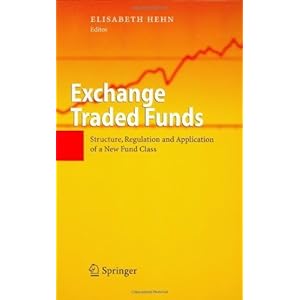Electronically Traded Funds
Exchange-traded funds
(ETFs) can be a valuable component for any investor's portfolio, from
the most sophisticated institutional money managers to a novice investor
who is just getting started. Some investors use ETFs as the sole focus
of their portfolios, and are able to build a well-diversified portfolio
with just a few ETFs. Others use ETFs to complement their existing
portfolios, and rely on ETFs to implement sophisticated investment
strategies. But, as with any other investment vehicle, in order to truly
benefit from ETFs, investors have to understand and use them
appropriately.Understanding most ETFs is very straightforward. An ETF trades like a stock on a stock exchange and looks like a mutual fund.
Its performance tracks an underlying index, which the ETF is designed
to replicate. The difference in structure between ETFs and mutual funds
explains part of different investing characteristics. The other
differences are explained by the type of management style.
















No comments:
Post a Comment